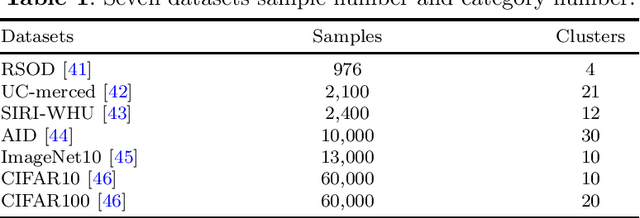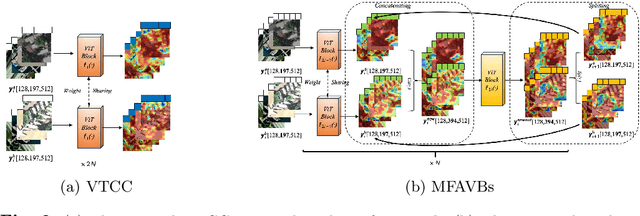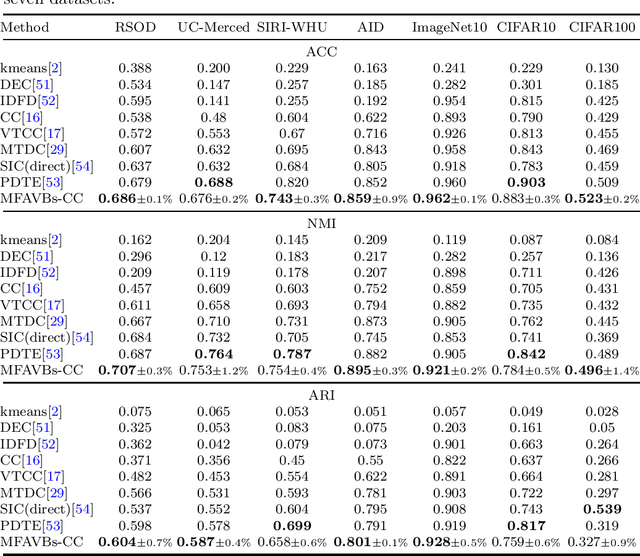Cheng Wang
Xiamen University, China
MoniRefer: A Real-world Large-scale Multi-modal Dataset based on Roadside Infrastructure for 3D Visual Grounding
Dec 31, 2025Abstract:3D visual grounding aims to localize the object in 3D point cloud scenes that semantically corresponds to given natural language sentences. It is very critical for roadside infrastructure system to interpret natural languages and localize relevant target objects in complex traffic environments. However, most existing datasets and approaches for 3D visual grounding focus on the indoor and outdoor driving scenes, outdoor monitoring scenarios remain unexplored due to scarcity of paired point cloud-text data captured by roadside infrastructure sensors. In this paper, we introduce a novel task of 3D Visual Grounding for Outdoor Monitoring Scenarios, which enables infrastructure-level understanding of traffic scenes beyond the ego-vehicle perspective. To support this task, we construct MoniRefer, the first real-world large-scale multi-modal dataset for roadside-level 3D visual grounding. The dataset consists of about 136,018 objects with 411,128 natural language expressions collected from multiple complex traffic intersections in the real-world environments. To ensure the quality and accuracy of the dataset, we manually verified all linguistic descriptions and 3D labels for objects. Additionally, we also propose a new end-to-end method, named Moni3DVG, which utilizes the rich appearance information provided by images and geometry and optical information from point cloud for multi-modal feature learning and 3D object localization. Extensive experiments and ablation studies on the proposed benchmarks demonstrate the superiority and effectiveness of our method. Our dataset and code will be released.
Improve Contrastive Clustering Performance by Multiple Fusing-Augmenting ViT Blocks
Nov 12, 2025



Abstract:In the field of image clustering, the widely used contrastive learning networks improve clustering performance by maximizing the similarity between positive pairs and the dissimilarity of negative pairs of the inputs. Extant contrastive learning networks, whose two encoders often implicitly interact with each other by parameter sharing or momentum updating, may not fully exploit the complementarity and similarity of the positive pairs to extract clustering features from input data. To explicitly fuse the learned features of positive pairs, we design a novel multiple fusing-augmenting ViT blocks (MFAVBs) based on the excellent feature learning ability of Vision Transformers (ViT). Firstly, two preprocessed augmentions as positive pairs are separately fed into two shared-weight ViTs, then their output features are fused to input into a larger ViT. Secondly, the learned features are split into a pair of new augmented positive samples and passed to the next FAVBs, enabling multiple fusion and augmention through MFAVBs operations. Finally, the learned features are projected into both instance-level and clustering-level spaces to calculate the cross-entropy loss, followed by parameter updates by backpropagation to finalize the training process. To further enhance ability of the model to distinguish between similar images, our input data for the network we propose is preprocessed augmentions with features extracted from the CLIP pretrained model. Our experiments on seven public datasets demonstrate that MFAVBs serving as the backbone for contrastive clustering outperforms the state-of-the-art techniques in terms of clustering performance.
NAUTILUS: A Large Multimodal Model for Underwater Scene Understanding
Oct 31, 2025Abstract:Underwater exploration offers critical insights into our planet and attracts increasing attention for its broader applications in resource exploration, national security, etc. We study the underwater scene understanding methods, which aim to achieve automated underwater exploration. The underwater scene understanding task demands multi-task perceptions from multiple granularities. However, the absence of large-scale underwater multi-task instruction-tuning datasets hinders the progress of this research. To bridge this gap, we construct NautData, a dataset containing 1.45 M image-text pairs supporting eight underwater scene understanding tasks. It enables the development and thorough evaluation of the underwater scene understanding models. Underwater image degradation is a widely recognized challenge that interferes with underwater tasks. To improve the robustness of underwater scene understanding, we introduce physical priors derived from underwater imaging models and propose a plug-and-play vision feature enhancement (VFE) module, which explicitly restores clear underwater information. We integrate this module into renowned baselines LLaVA-1.5 and Qwen2.5-VL and build our underwater LMM, NAUTILUS. Experiments conducted on the NautData and public underwater datasets demonstrate the effectiveness of the VFE module, consistently improving the performance of both baselines on the majority of supported tasks, thus ensuring the superiority of NAUTILUS in the underwater scene understanding area. Data and models are available at https://github.com/H-EmbodVis/NAUTILUS.
InfoMosaic-Bench: Evaluating Multi-Source Information Seeking in Tool-Augmented Agents
Oct 02, 2025Abstract:Information seeking is a fundamental requirement for humans. However, existing LLM agents rely heavily on open-web search, which exposes two fundamental weaknesses: online content is noisy and unreliable, and many real-world tasks require precise, domain-specific knowledge unavailable from the web. The emergence of the Model Context Protocol (MCP) now allows agents to interface with thousands of specialized tools, seemingly resolving this limitation. Yet it remains unclear whether agents can effectively leverage such tools -- and more importantly, whether they can integrate them with general-purpose search to solve complex tasks. Therefore, we introduce InfoMosaic-Bench, the first benchmark dedicated to multi-source information seeking in tool-augmented agents. Covering six representative domains (medicine, finance, maps, video, web, and multi-domain integration), InfoMosaic-Bench requires agents to combine general-purpose search with domain-specific tools. Tasks are synthesized with InfoMosaic-Flow, a scalable pipeline that grounds task conditions in verified tool outputs, enforces cross-source dependencies, and filters out shortcut cases solvable by trivial lookup. This design guarantees both reliability and non-triviality. Experiments with 14 state-of-the-art LLM agents reveal three findings: (i) web information alone is insufficient, with GPT-5 achieving only 38.2% accuracy and 67.5% pass rate; (ii) domain tools provide selective but inconsistent benefits, improving some domains while degrading others; and (iii) 22.4% of failures arise from incorrect tool usage or selection, highlighting that current LLMs still struggle with even basic tool handling.
Ultra-Efficient Decoding for End-to-End Neural Compression and Reconstruction
Oct 01, 2025Abstract:Image compression and reconstruction are crucial for various digital applications. While contemporary neural compression methods achieve impressive compression rates, the adoption of such technology has been largely hindered by the complexity and large computational costs of the convolution-based decoders during data reconstruction. To address the decoder bottleneck in neural compression, we develop a new compression-reconstruction framework based on incorporating low-rank representation in an autoencoder with vector quantization. We demonstrated that performing a series of computationally efficient low-rank operations on the learned latent representation of images can efficiently reconstruct the data with high quality. Our approach dramatically reduces the computational overhead in the decoding phase of neural compression/reconstruction, essentially eliminating the decoder compute bottleneck while maintaining high fidelity of image outputs.
Enhancing Physical Consistency in Lightweight World Models
Sep 15, 2025Abstract:A major challenge in deploying world models is the trade-off between size and performance. Large world models can capture rich physical dynamics but require massive computing resources, making them impractical for edge devices. Small world models are easier to deploy but often struggle to learn accurate physics, leading to poor predictions. We propose the Physics-Informed BEV World Model (PIWM), a compact model designed to efficiently capture physical interactions in bird's-eye-view (BEV) representations. PIWM uses Soft Mask during training to improve dynamic object modeling and future prediction. We also introduce a simple yet effective technique, Warm Start, for inference to enhance prediction quality with a zero-shot model. Experiments show that at the same parameter scale (400M), PIWM surpasses the baseline by 60.6% in weighted overall score. Moreover, even when compared with the largest baseline model (400M), the smallest PIWM (130M Soft Mask) achieves a 7.4% higher weighted overall score with a 28% faster inference speed.
False Sense of Security: Why Probing-based Malicious Input Detection Fails to Generalize
Sep 04, 2025



Abstract:Large Language Models (LLMs) can comply with harmful instructions, raising serious safety concerns despite their impressive capabilities. Recent work has leveraged probing-based approaches to study the separability of malicious and benign inputs in LLMs' internal representations, and researchers have proposed using such probing methods for safety detection. We systematically re-examine this paradigm. Motivated by poor out-of-distribution performance, we hypothesize that probes learn superficial patterns rather than semantic harmfulness. Through controlled experiments, we confirm this hypothesis and identify the specific patterns learned: instructional patterns and trigger words. Our investigation follows a systematic approach, progressing from demonstrating comparable performance of simple n-gram methods, to controlled experiments with semantically cleaned datasets, to detailed analysis of pattern dependencies. These results reveal a false sense of security around current probing-based approaches and highlight the need to redesign both models and evaluation protocols, for which we provide further discussions in the hope of suggesting responsible further research in this direction. We have open-sourced the project at https://github.com/WangCheng0116/Why-Probe-Fails.
Model-Task Alignment Drives Distinct RL Outcomes
Aug 28, 2025Abstract:Recent advances in applying reinforcement learning (RL) to large language models (LLMs) have led to substantial progress. In particular, a series of remarkable yet often counterintuitive phenomena have been reported in LLMs, exhibiting patterns not typically observed in traditional RL settings. For example, notable claims include that a single training example can match the performance achieved with an entire dataset, that the reward signal does not need to be very accurate, and that training solely with negative samples can match or even surpass sophisticated reward-based methods. However, the precise conditions under which these observations hold - and, critically, when they fail - remain unclear. In this work, we identify a key factor that differentiates RL observations: whether the pretrained model already exhibits strong Model-Task Alignment, as measured by pass@k accuracy on the evaluated task. Through a systematic and comprehensive examination of a series of counterintuitive claims, supported by rigorous experimental validation across different model architectures and task domains, our findings show that while standard RL training remains consistently robust across settings, many of these counterintuitive results arise only when the model and task already exhibit strong model-task alignment. In contrast, these techniques fail to drive substantial learning in more challenging regimes, where standard RL methods remain effective.
EndoGen: Conditional Autoregressive Endoscopic Video Generation
Jul 23, 2025Abstract:Endoscopic video generation is crucial for advancing medical imaging and enhancing diagnostic capabilities. However, prior efforts in this field have either focused on static images, lacking the dynamic context required for practical applications, or have relied on unconditional generation that fails to provide meaningful references for clinicians. Therefore, in this paper, we propose the first conditional endoscopic video generation framework, namely EndoGen. Specifically, we build an autoregressive model with a tailored Spatiotemporal Grid-Frame Patterning (SGP) strategy. It reformulates the learning of generating multiple frames as a grid-based image generation pattern, which effectively capitalizes the inherent global dependency modeling capabilities of autoregressive architectures. Furthermore, we propose a Semantic-Aware Token Masking (SAT) mechanism, which enhances the model's ability to produce rich and diverse content by selectively focusing on semantically meaningful regions during the generation process. Through extensive experiments, we demonstrate the effectiveness of our framework in generating high-quality, conditionally guided endoscopic content, and improves the performance of downstream task of polyp segmentation. Code released at https://www.github.com/CUHK-AIM-Group/EndoGen.
Robust Noisy Pseudo-label Learning for Semi-supervised Medical Image Segmentation Using Diffusion Model
Jul 22, 2025Abstract:Obtaining pixel-level annotations in the medical domain is both expensive and time-consuming, often requiring close collaboration between clinical experts and developers. Semi-supervised medical image segmentation aims to leverage limited annotated data alongside abundant unlabeled data to achieve accurate segmentation. However, existing semi-supervised methods often struggle to structure semantic distributions in the latent space due to noise introduced by pseudo-labels. In this paper, we propose a novel diffusion-based framework for semi-supervised medical image segmentation. Our method introduces a constraint into the latent structure of semantic labels during the denoising diffusion process by enforcing prototype-based contrastive consistency. Rather than explicitly delineating semantic boundaries, the model leverages class prototypes centralized semantic representations in the latent space as anchors. This strategy improves the robustness of dense predictions, particularly in the presence of noisy pseudo-labels. We also introduce a new publicly available benchmark: Multi-Object Segmentation in X-ray Angiography Videos (MOSXAV), which provides detailed, manually annotated segmentation ground truth for multiple anatomical structures in X-ray angiography videos. Extensive experiments on the EndoScapes2023 and MOSXAV datasets demonstrate that our method outperforms state-of-the-art medical image segmentation approaches under the semi-supervised learning setting. This work presents a robust and data-efficient diffusion model that offers enhanced flexibility and strong potential for a wide range of clinical applications.
 Add to Chrome
Add to Chrome Add to Firefox
Add to Firefox Add to Edge
Add to Edge